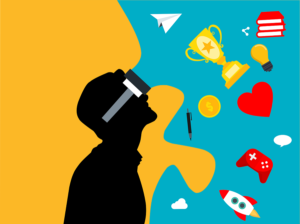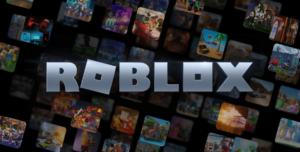How to use Gamification to Keep your Team Motivated and Productive

Motivation and productivity seem to be intertwined in the world of business, especially when you’re trying to step up your game. Still, it can be challenging to find new incentives and keep the work environment engaging enough so everyone would feel stimulated.
But there’s one way that seems to yield great results – team managers and CEOs everywhere agree that gamification can provide the diversity and rewards that motivate people to achieve goals and even surpass them.
Moreover, gamification can also be used to attract better talent, increase loyalty towards the company, and enhance engagement.
What is Gamification?
Gamification is a technique that takes game mechanics and applies them to real-life problems (like a team’s lack of motivation or kids’ disinterest in learning). In layman’s terms, gamification provides a way to make boring tasks interesting and challenging.
This is why many schools use gamification to help children get more excited about learning. Moreover, using this technique many kids became interested in topics that are usually considered challenging such as math, physics, chemistry, and more.
The same happens in the world of business, where, as adults, we must read, learn, and remember various materials from sales techniques to boring reports to unchallenging procedures and routines that pertain to the culture of the current employer.
Now, imagine you’ve had a rough week at home – are you still as motivated to go through tons of boring papers or work on that merger? Of course not!
But, if your manager would use gamification techniques that let you break the task into various levels of difficulty, each ending with a small reward, things would be different.
Gamification ads fun to the equation by creating a direct connection between reward and the work that’s required to obtain it. It’s just like going to the gym (or for a run) so you’ll feel better afterward.
How to Use Gamification Right?
Just like with any other techniques, gamification can be used wrong, which diminishes its effects and even renders it useless. For this, we listed some principles to consider when building your motivation strategy:
Don’t Ignore the Human Element
Many CEOs and Project Managers tend to see gamification as an implementation of new technologies. They add some new high-tech toys to the company’s inventory or find a cool platform that lets employees experience with gaming in the real-life, and the job is done.
According to Christopher Cunningham, the author of ‘Gamification by Design’, successful implementation of this method requires 75% psychology and 25% technology. What does this mean?
It means that you should first ask your staff or team members if they are interested in participating in the game. This shows you care about their opinions and overall happiness in the workplace and not just looking to get more productivity out of them.
Choose Rewards Wisely
The easiest and less creative way to reward an employee is with money. True, everyone could use more money at some point, but most employees feel more motivated by other forms of reward.
Nowadays, people are more motivated by professional satisfaction (the feeling that their work matters), on-the-job recognition, or opportunities to develop their skill set. So, you will have to find better and more creative ways to make rewards engaging.
For instance, you could offer an experience they’ll never forget (a trip to an exotic location, skydiving, meeting a celebrity they admire, and so on). You can also consider offering them a handwritten appreciation letter signed by the big CEOs. Lastly, a good idea for a reward is an online class, from an advanced e-learning platform, on a topic you know they want to explore.
The idea is to find rewards that ensue positive feelings so your team will be excited about enrolling in the game and impatient to claim the rewards.
The Mechanics
We’ve talked about the elements that matter and how to choose the rewards, but what about the game mechanics to implement?
Well, first, you need to understand the difference between games and gamification. Games are a lot more complex and combine lots of elements that don’t have a purpose in the business world. That’s why gamification keeps it simple by borrowing some of the elements that are known to drive participation.
For instance, once you have willing participants, you need to explain the rules. These must be clear, without allowing players to find loopholes or make people feel disadvantaged. In fact, these rules are the mechanics of your game, as they describe what is allowed, what earns players points, and what can get them penalized.
Lastly, the game must have a way to determine winners and losers, to get players interested in competing. Usually, the most valuable currency in gamification is status, so things like points, leaderboards, or even badges can keep people in the run.
Wrap Up
Gamification has become a buzzword and many CEOs and PMs love to dread it. However, this only happens if you look at this method as an extra thing you have to do from time to time to keep people happy.
Still, companies that integrate gamification into their very structure and apply it consistently managed to create a fun and friendly work environment that keeps employees engaged and happy.
The good news is that you can start using gamification gradually. For instance, implement it in the training phase, where you can break down information-rich modules into tasks. This will boost the employees’ interest and engagement and will give you some practice with this method.
Author : Oli Kang
Oli is a working mum who has a passion for teaching and all things educational. With a background in marketing, Oli manages the digital channels and content at Courses.com.au.






